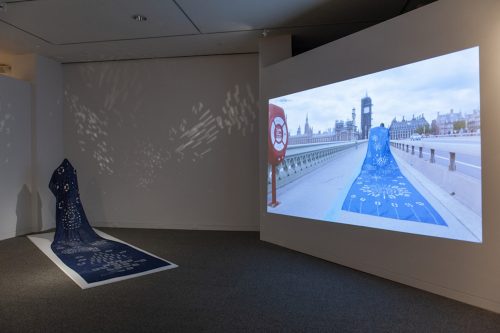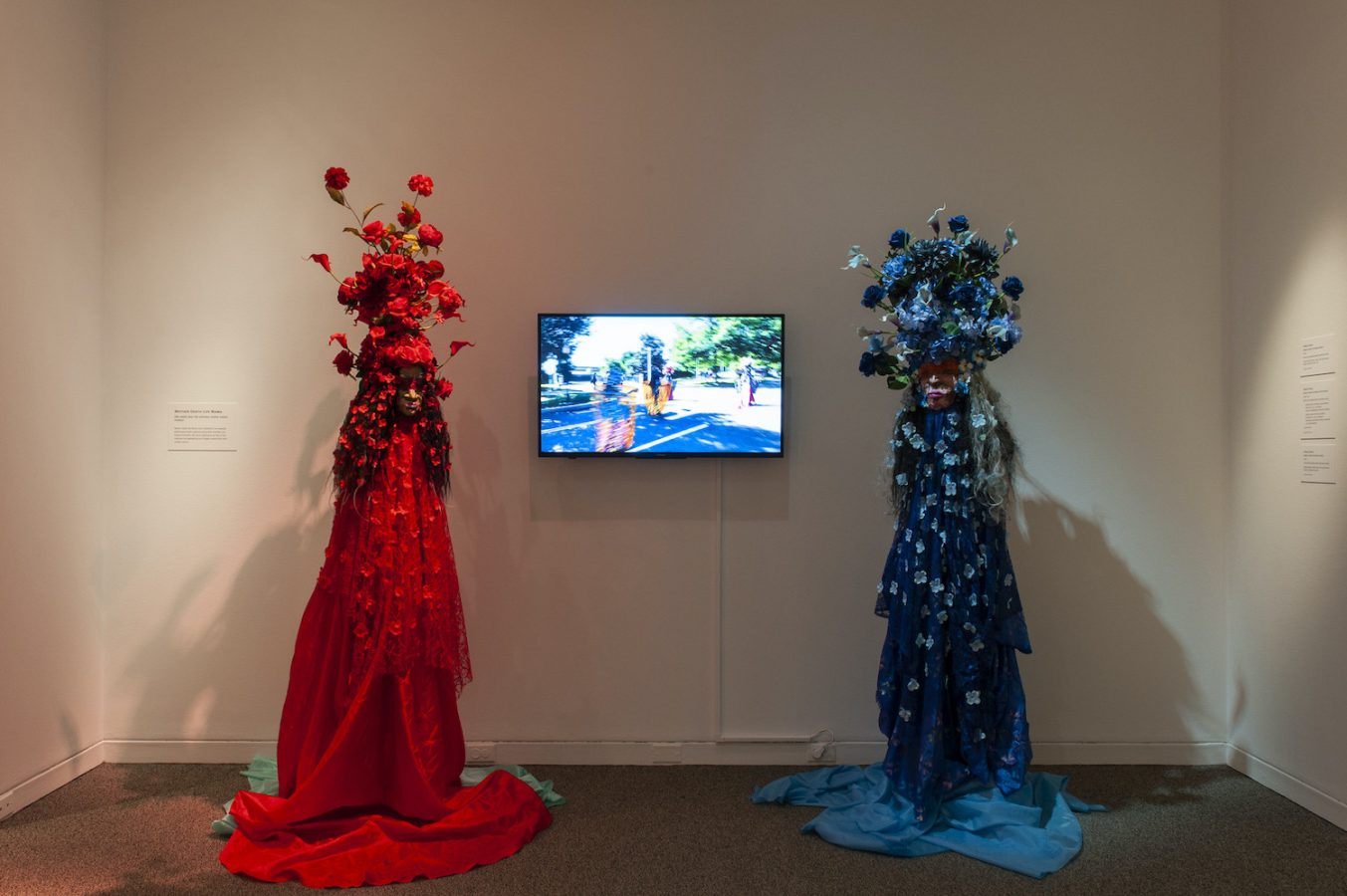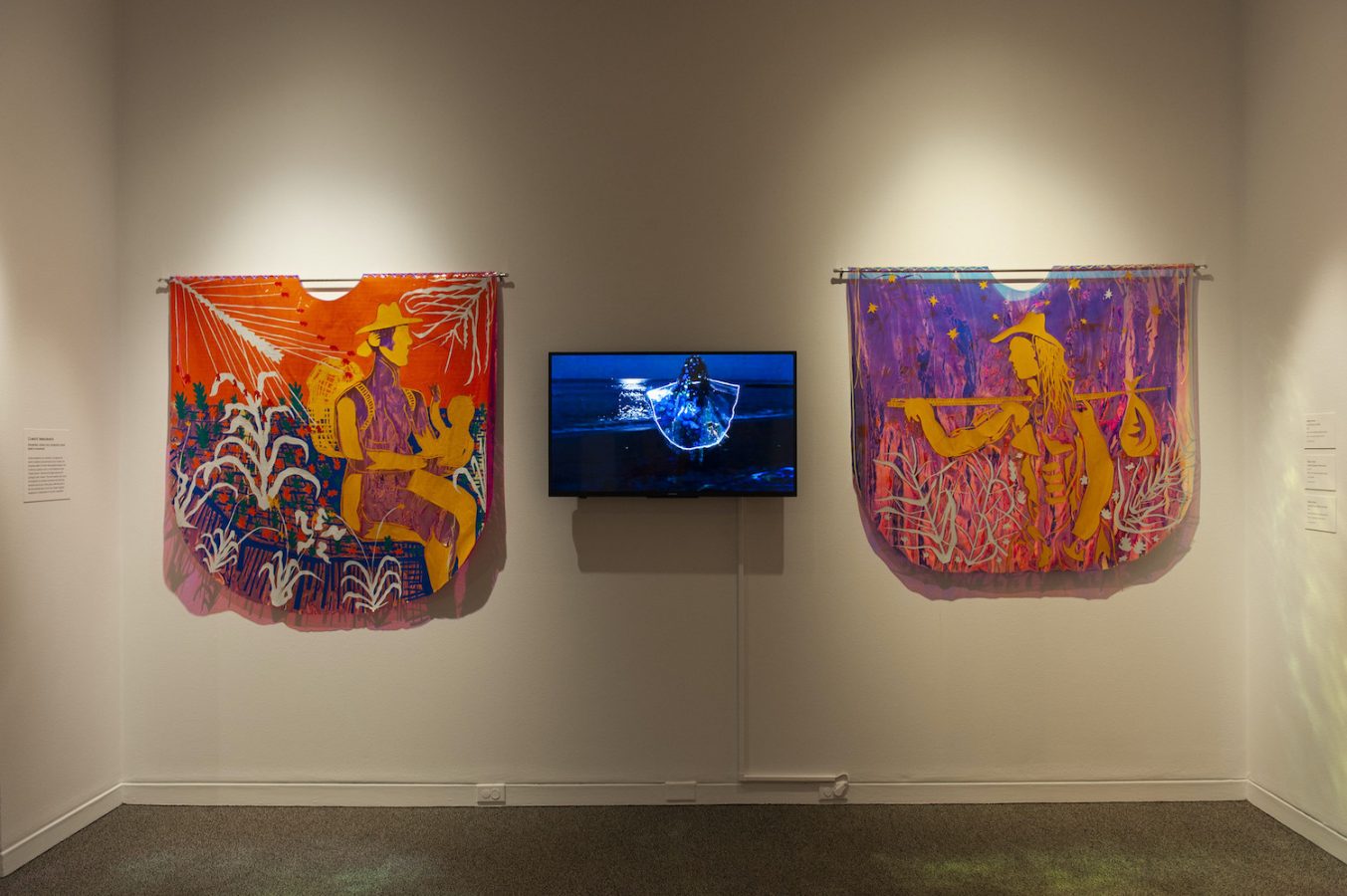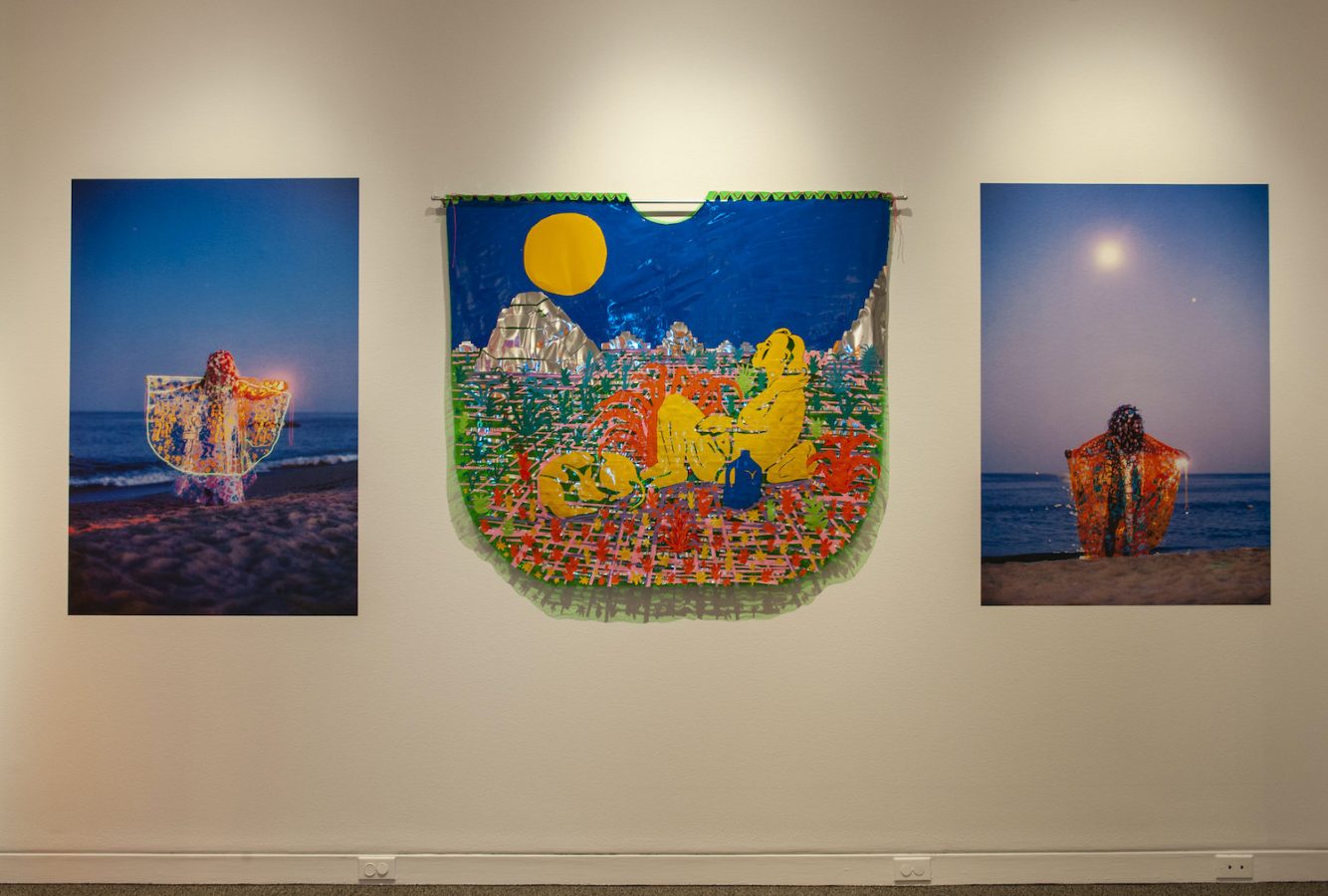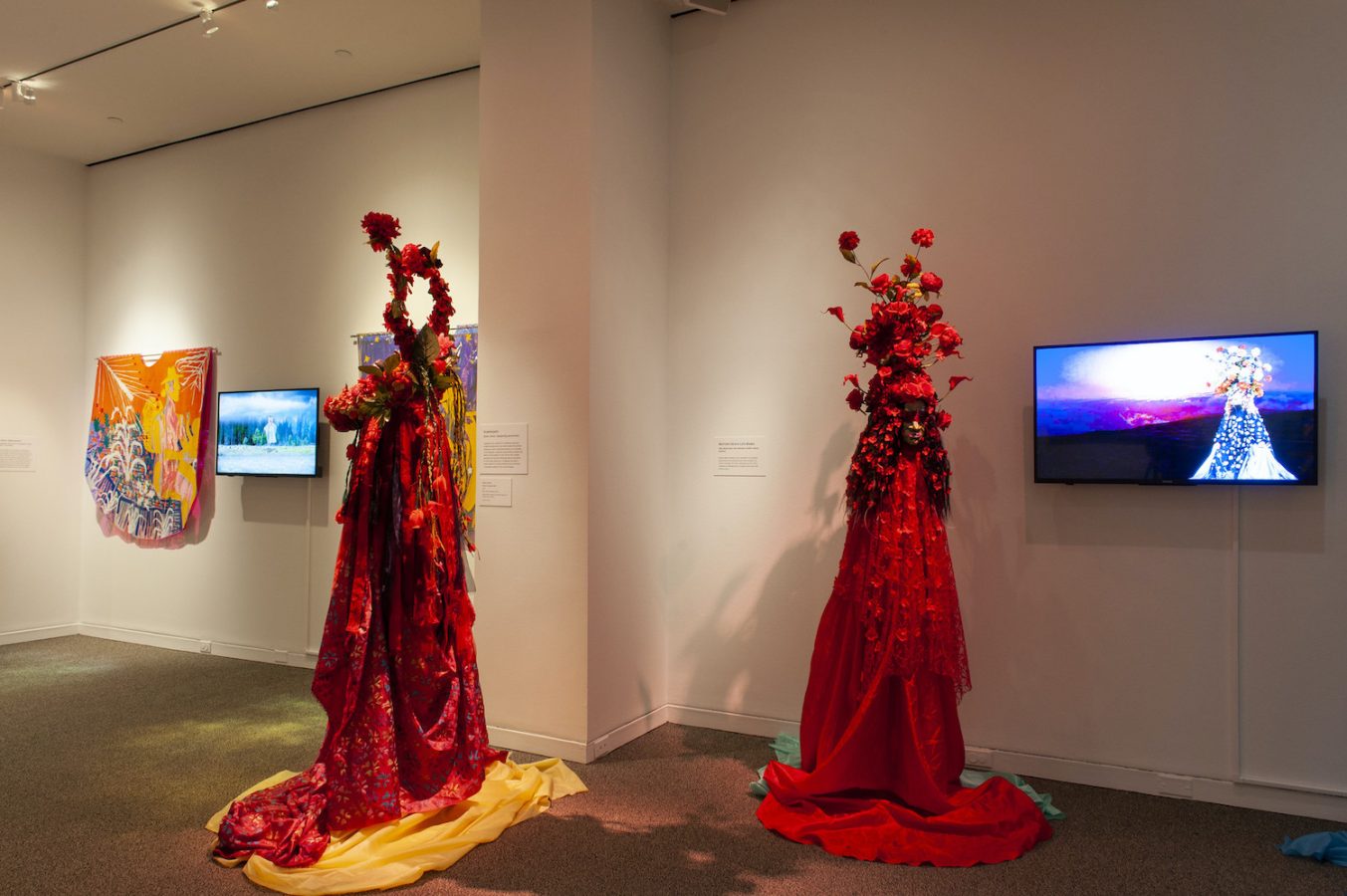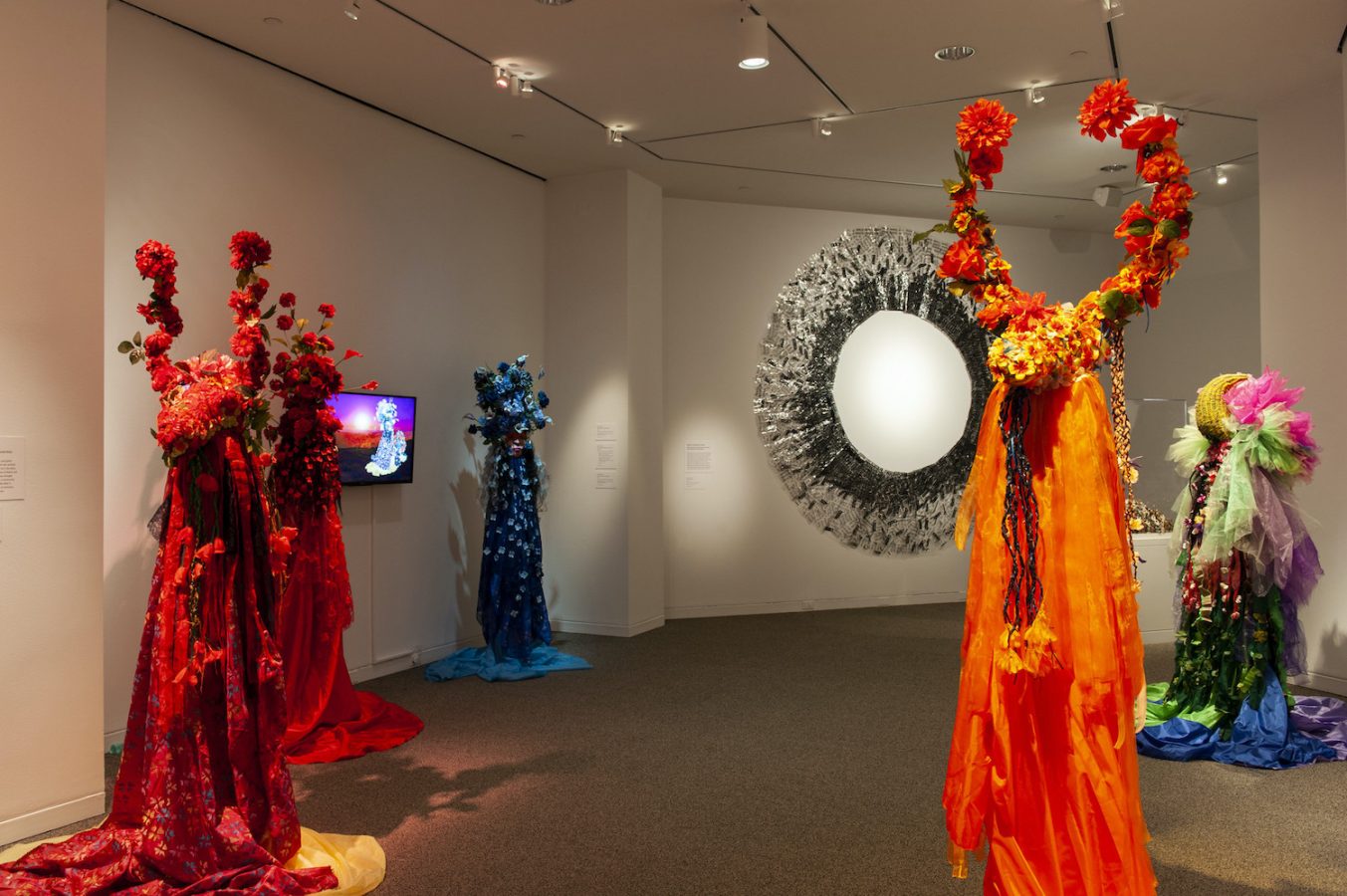More than 100 small horned deities, patterned with luminous gold, red, white, and black glazes, sit on a pedestal, stacked and huddled closely together, encased in a tomblike vitrine. In his Sondheim finalist show, Hoesy Corona displays only a fraction of the 300 miniature glazed porcelain talismans from his “Scapegoat Idols” series, which he has been working on since 2017 as a form of devotional practice. I imagined Corona spending quiet moments over years manipulating the material, contemplating and creating.
The elements, rituals, and processes embedded throughout Corona’s gallery space create their own kind of meditative experience. His corner of the Walters Art Museum for the Sondheim Finalists exhibition is otherworldly and special. I forgot about time in this realm but felt anchored by his sculpture, installation, and performance works, which the queer Latinx artist presents as a survey exhibition titled Sunset Moonlight, spanning 10 years of artistic production.
